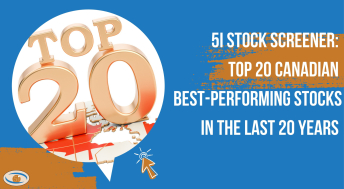Target prices on a stock make for interesting reading, but many investors wonder whether they should follow them or, more importantly, use them as a simple way to know when to sell a stock.
Our mantra: don’t use target prices, don’t follow them and don't act upon them — effectively, investors should completely ignore them. Here are five reasons why — in our view — target prices on stocks are next to useless.
Target prices are too short-term oriented
An analyst’s focus tends to be relatively short term, typically 12 months, with quarterly updates, though it can sometimes be as long as 18 months. True investing, however, requires a much longer time frame.
Equity buyers should commit for a minimum of five years. A 12-month target price really does not help a true investor much.
They tend to be horribly inaccurate
Target prices typically lag share prices. In other words, they rise with stock prices over time, and they also tend to follow when prices are falling.
At market peaks, looking at targets gets you get more optimistic with higher and higher targets set as stocks surge. In a down market, targets cause you to become ever more pessimistic as they keep ratcheting downwards.
As a result, investors are prompted to do the exact opposite of what they should be doing: they get optimistic at market peaks and pessimistic at market bottoms.
This is no way to get rich. And that’s just the problem with targets at market inflections. In general, target prices are just not very accurate, period.
They are designed to generate trading and commission fees for brokerages
We do not know which analyst first decided long ago to slap a target price on a stock. But we can imagine that brokerage’s executives rubbing their hands with glee when the stock in question reached its target and clients started to sell.
Of course, selling one stock typically results in buying another, so a hit target can generate two selling commissions for a broker. Bonus time!
They cause you to sell winners
We remember when Constellation Software Inc. (CSU/TSX) had a target price of $40 per share (National Bank, December 2009, to be exact). Today, the stock is near $280. Any investor following that old target missed out on a seven-fold increase in the stock in just five years.
In 2006, Goldman Sachs had a price target of US$36 on Priceline Group Inc. (PCLN/Nasdaq). Not a typo: US$36 per share. Today, Priceline trades for almost US$1,300 per share.
In 2004, UBS had a US$2.64 price target (split-adjusted) on Apple Inc. Today it trades around US$97 per share. We could fill pages of potentially missed winners due to target prices.
Target prices cause investors to sell, so, by default, you will end up selling all of your big winners too early if you pay any attention to them.
Target prices need to forecast too many future variables
Setting a target price requires analysts to predict future earnings, interest rates, market sentiment, global economies, valuation changes and other factors. Just one factor is almost impossible to predict, let alone dozens of different variables.
What’s more, when a company actually reaches a target price, it means something has changed — either better earnings (for a higher target), a better market, better valuations or simply the passage of time.
To try to predict such changes in advance doesn't make any sense. Guessing where markets and sentiment might be in the future is just that, a guess. Target prices, in our view, are like throwing darts at a random prediction board.
Instead of target prices, focus on the companies. Spend your time finding good companies or, better yet, great companies, and then hold them for a very long time.
If you pick the right company, it will blow through broker target prices year in and year out. Let someone else sell far too early based on targets and pay more in commissions for the privilege of doing so.





Comments
Login to post a comment.